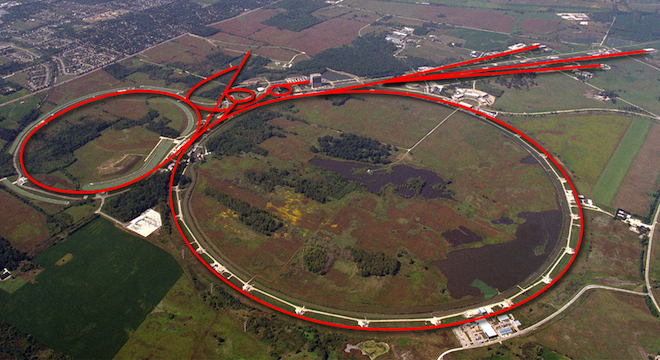Nobody is quite sure what to make yet of the astonishing announcement Thursday from the European Organization for Nuclear Research (CERN) that it has conducted an experiment that seems to show neutrinos, a type of uncharged particle, traveling faster than the speed of light.
After all, if confirmed, the results from CERN’s OPERA experiment would mean scrapping one of physics’ most fundamental theories: Albert Einstein’s theory of special relativity, part of which states that nothing can travel faster than the speed of light.
There have already been a number of science writers and physicists raising profound doubts about the results.
But in order to find out for sure whether or not we have to revise or scrap Einstein’s theory, the results have to be replicated, and U.S. particle physics laboratory Fermilab is going to be the one to do it.
Indeed, it was Fermilab’s MINOS experiment in Soudan, Minnesota, that first recorded neutrinos traveling faster than the speed of light in 2007. But their results attracted much less attention because the results were within a margin of error.
Now Fermilab is going back to the drawing board with better measuring tools to see if they can actually help CERN prove what could be one of the most important scientific discoveries of all time.
“The MINOS experiment has plans to update their original 2007 measurement with a number of improvements, including 10x more data,” wrote MINOS spokesperson Jenny Thomas, a professor of particle physics at University College London in an email to TPM’s Idea Lab.
“We should have a result in 4-6 months as the data is already taken. We just have to measure some of our delays more carefully,” she added.
Thomas explained that the replication process would entail a team of 4 to 5 who would rely on a better GPS system and an atomic clock to detect the neutrino stream as it is fired through MINOS from the originating point, Fermilab’s Main Injector, which is located 450 miles away in Batavia, Illinois, near Chicago.
It’s worth noting that while that part of Fermilab will be helping to make or break history, another, major part of the particle physics lab will be shutting down due to a lack of federal funding: Fermilab’s Tevatron, the largest accelerator in the world until CERN’s Large Hadron Collider was booted up in 2008, is due to turn off on September 30 at 2 p.m.
So although America may get to play its part in this particle physics adventure, our future as leaders in the arena remains an open question, just like the results of the OPERA experiment.
Correction: This article originally misspelled the name of the Tevatron as “Tetravon,” and misattributed the date for when the accelerator will close as Oct. 30. We regret the errors.









